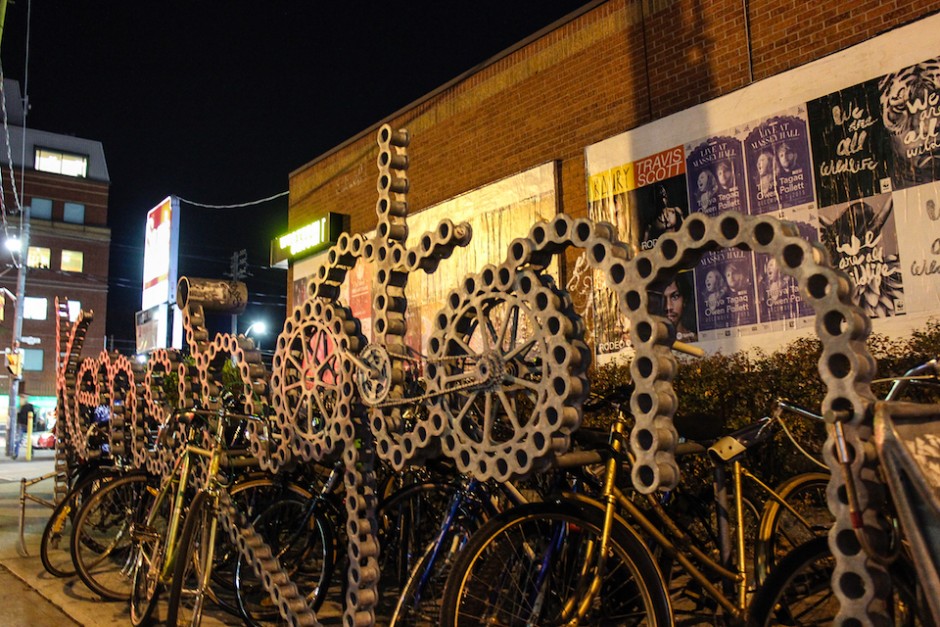In a city full of cyclists, bike racks make up a significant portion of Toronto’s street furniture. While often disregarded as a mundane aspect of our otherwise lively infrastructure — rarely warranting a second look from passersby — certain bike racks around the city have a notably artistic story. In 2008, Toronto-based sculptor and artist Phil Sarazen began working with local community members on an art project that aimed to transform local bike racks into a new form of street art. Out of this collaboration came the Kensington Market bike rack -— located at the corner of Augusta and College St — followed by a series of other bike racks around the downtown core.
Sarazen, who spent a portion of his life in downtown homeless shelters, created this project to give marginalized communities a chance to express themselves artistically. Noting the amount of unused talent that the city has to offer, Sarazen hoped to create a project that would easily engage the community.
Inspiration behind the project
Now 62, Sarazen realized the importance of community engagement when living in a temporary housing facility called ‘Tent City’ that emerged near the waterfront in the early 2000’s. From this realization came the idea of making art projects out of bike racks. Homeless people, ex-convicts, and drug addicts were given a constructive form of expression as well as a source of work. The artists were paid for their designs, and it allowed these individuals to develop their own ideas and transform them into bike racks to be used around Toronto.
Bike stand art: a project for the community, by the community
The first bike rack project was developed alongside the Parkdale Recreation Centre using designs made by people who suffered from mental illnesses. The racks aimed to capture the personalities of those who designed them, as well as the stores and businesses in the Parkdale neighbourhood. One of the bike racks in Parkdale, located outside the music shop Gary Armstrong Woodwinds, is fittingly made to resemble a treble clef.
Aside from the bike racks’ art-based significance, the racks continue to remain functional as well. Walking through Kensington Market, you’ll see plenty of bikes chained along the letters that spell out ‘Kensington.’
Impact of the bike racks
According to Sarazen, the bike rack project has had a social and cultural impact on marginalized communities within Toronto. “You’ve changed their lives,” expresses Sarazen, referring to the individuals who got involved with the project. Sarazen notes that the project also has an interesting psychological affect on the artists, who in many cases come into the project with bruised egos, but are able to express their true selves through their art.
Future of the bike stand art: GO stations?
Sarazen believes that if GO bike stations were made to be part of the project, it could play a role in encouraging people to use bicycles instead of their cars. He said that while it’s a commonly held opinion that bike racks should be simple and low cost, developing further installations of bike rack art could encourage the mode of transport, as well as support the community. Sarazen notes how, primarily, it’s important to put bike racks in areas where they can be used to encourage biking. He lists Toronto’s hotel district and the Lakeshore area as a couple frontiers that the project is aiming to tackle.
The bike stand project is ongoing today, and according to Sarazen will feature a new development in Bloordale within the coming year. With multiple designer bike stands across the city, the bike stand project is a significant addition to Toronto’s vibrant cycling community, and provides an artistic element to basic infrastructure. Seven years since the project was created, the bike stands are now a prominent feature of
Toronto’s street furniture.




